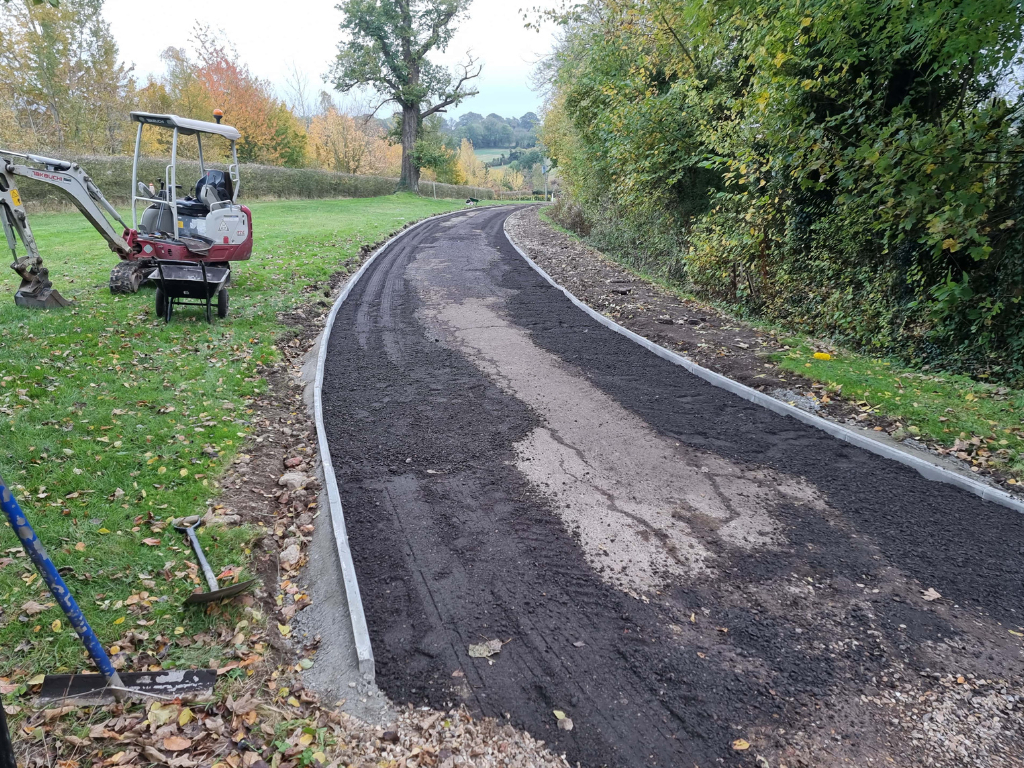New Build Roads: Tarmac vs. Concrete – Making the Right Choice
Introduction: When constructing new roads for residential, commercial, or municipal developments, one of the primary decisions is choosing the ideal road surface material. Two popular options often considered are tarmac (asphalt) and concrete. Each material offers its unique advantages and drawbacks. In this blog post, brought to you by Lakenheath Driveway Services, we’ll delve into the key differences between tarmac and concrete for newly built roads to help you make an informed choice.
Tarmac (Asphalt)
- Cost-Effective Solution:
Tarmac is generally more cost-effective than concrete, making it a preferred choice for many road construction projects. It is an economical option for developers working within budget constraints.
- Quick Installation:
Tarmac can be laid quickly, reducing construction time and minimising disruption to residents or businesses in the area. This swift installation can be especially advantageous for time-sensitive projects.
- Flexibility:
Tarmac is a flexible material which can withstand slight ground movements without cracking. This flexibility is beneficial in regions with fluctuating temperatures or soil conditions.
- Repairs and Maintenance:
Tarmac is relatively easy and cost-effective to repair and maintain. Over time, cracks and potholes can develop, but these can be filled and resurfaced without extensive reconstruction.
- Smooth Surface:
Tarmac typically provides a smoother surface compared to concrete. This smoothness can improve driving comfort and reduce wear and tear on vehicles.
Concrete
- Durability and Longevity:
Concrete roads are known for their exceptional durability and longevity. When properly constructed and maintained, they can last significantly longer than tarmac roads. This longevity can result in lower life-cycle costs.
- Low Maintenance:
Concrete requires less maintenance than tarmac. It is less susceptible to potholes and rutting, reducing the need for frequent repairs. This lower maintenance requirement can lead to cost savings over time.
- Environmental Benefits:
Concrete is considered a more environmentally friendly option due to its recyclable properties and reflective surface, which can help reduce heat island effects in urban areas. It also has a longer service life, reducing the need for frequent reconstruction.
- Resistance to Oil and Chemicals:
Concrete is less susceptible to oil and chemical spill damage, making it a suitable choice for areas with heavy vehicle traffic, such as industrial zones or loading docks.
- Aesthetic Options:
Concrete offers a wider range of aesthetic options, including various finishes and decorative elements. This versatility makes it suitable for projects where aesthetics play a significant role.
Conclusion: Choosing between tarmac and concrete for newly built roads ultimately depends on your project requirements and priorities. Tarmac offers cost-effectiveness and quicker installation, making it suitable for projects with budget and time constraints. On the other hand, concrete provides exceptional durability, low maintenance, and environmental benefits, making it a long-term investment in the overall sustainability of your development.
Call us on: 01842 778 593
Click here to find out more about Lakenheath Driveway Services
Click here to complete our contact form and see how we can help with your driveway needs.

